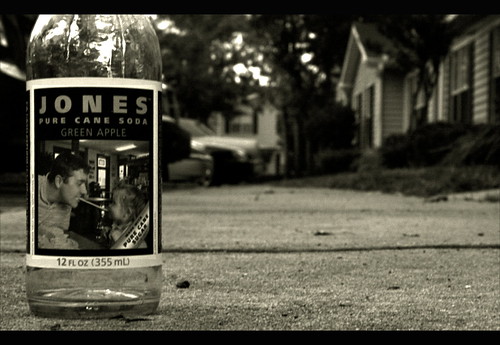McDonaldland
Stephen Von Worley maps McDonalds locations in the US. Looking at the Dakotas, there’s not as many as one would think. Details here.
Stephen Von Worley maps McDonalds locations in the US. Looking at the Dakotas, there’s not as many as one would think. Details here.
‘Just as Sun Tzu’s Art of War is read as a lesson in business strategy rather than fighting in a miliary sense, or Machiavelli’s The Prince is written about government but used as a guide to management, so this book uses the creative processes of good advertising as a metaphor for business practice.’ -inside cover
In It’s Not How Good You Are . . . UK-based advertising guru Paul Arden (1940-2008) does a great job reframing how one can approach creativity, their career and life – by not playing by the rules and reinventing convention. [Read more →]
GOOD is for people who give a damn – read more below.
but first . . .
OPEN studio’s Scott Stowell headed up the original design team for GOOD. And I have to write about Scott because he’s been a major influence on my work. Scott = GOOD influence.
I’ve been a fan of Scott’s work for years, ever since I saw a talk he gave at one of the 1990s ATypI conferences. His views/advice on design and teaching – for me – has been invaluable. [Read more →]
‘Adolescent girls are uniquely capable of raising the standard of living in the developing world.’
Go to the girl effect website to find out how.
The Nike and NoVo Foundations are involved. And it’s a part of the UN Millennium Development Goals. Design by Wieden + Kennedy.
Found via Dr. Shelley Gruendler
We’re still talking about ‘change’ right? It was a huge word last year.
Design thinking can change the world.
But design thinking is much more than ‘aesthetics, image and fashion.’ More than just a means to encourage passive consumption – which for a long time has been the basis for our (now shattered) economy.
Talk (above) by Tim Brown of IDEO. Where design should be headed.
Designers do more than just make things look pretty. Designers can play a role in the overall experience of a customer or audience. Often thru small design decisions.
These concepts are shown in this TED video (above) featuring Paul Bennett. And Bauer Bodoni. And a slightly tortured teddy bear.

‘Check my framing. Apply Rule of Thirds . . .’
Jeremy Davis takes it apart – before and after studies – as to what happens when one swallows the red pill and actually becomes a designer.
The Left and the Right in the US – as visualized by David McCandless and Stefanie Posavec. From the upcoming book, The Visual Miscellaneum.
Click on the image for larger view/jump. More stuff from David McCandless here. And check out Stefanie Posavec’s site here.
Here’s one more.
Same robots, but not really. Different robots because the voices are different.
I’m smart. I figured that out.
This one’s been bouncing around for a few weeks now. And one of the reasons this video resonates is – it’s sooo true. I’ve had similar conversations over the years (even just a couple months ago), but don’t remember this much swearing. At least not during the actual conversation.
And (below) here’s the sequel . . .
And another . . .
Found via Twitter.com/AngelaGlenn and Jonathan Weast